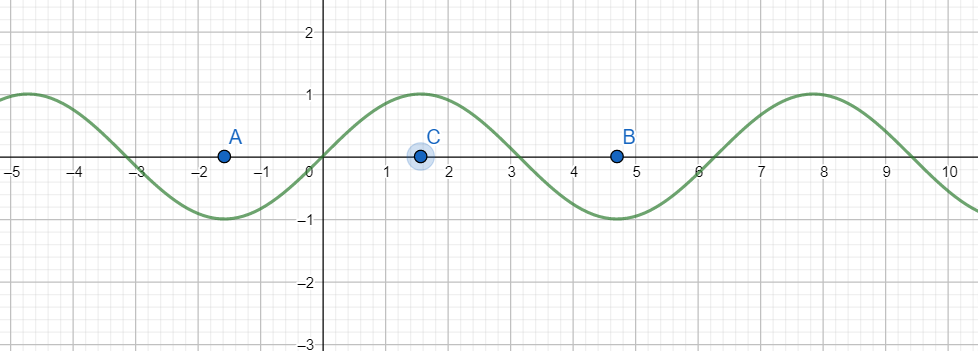Question
Question: Prove that \(\arcsin \left( -x \right)=-\arcsin x,x\in \left[ -1,1 \right]\)...
Prove that arcsin(−x)=−arcsinx,x∈[−1,1]
Solution
Hint: Use the fact that if y=arcsinx, then x=siny. Assume y =arscsin(-x). Use the previously mentioned fact and write x in terms of y. Use the fact that sinx is an odd function. Finally, take inverse again and hence use the fact that if y∈[−2π,2π], then arcsin(siny)=y and hence prove the result.
Complete Step-by-step answer:
Before dwelling into the proof of the above question, we must understand how sin−1x is defined even when sinx is not one-one.
We know that sinx is a periodic function.
Let us draw the graph of sinx

As is evident from the graph sinx is a repeated chunk of the graph of sinx within the interval [A,B] , and it attains all its possible values in the interval [A,C]. Here A=2−π,B=23π and C=2π
Hence if we consider sinx in the interval [A, C], we will lose no value attained by sinx, and at the same time, sinx will be one-one and onto.
Hence arcsinx is defined over the domain [−1,1], with codomain [2−π,2π] as in the domain [2−π,2π], sinx is one-one and Rsinx=[−1,1].
Now since arcsinx is the inverse of sinx it satisfies the fact that if y=arcsinx, then siny=x.
So let y = arcsin(-x), y∈[−2π,2π]
Hence we have siny =- x.
Hence we have x=−siny
Now since sinx is an odd function, we have x=sin(−y)
Taking arcsin on both sides, we get
arcsinx=arcsin(sin(−y))
Now since y∈[−2π,2π], we have −y∈[−2π,2π]
We know that if y∈[−2π,2π], then arcsin(siny)=y [Valid only in principal branch]
Hence we have
arcsinx=−y⇒y=−arcsinx
Reverting to the original variable, we get
arcsin(−x)=−arcsinx
Since -x is in the domain of arcsin, we get
−x∈[−1,1]⇒x∈[−1,1]
Hence we have arcsin(−x)=−arcsin(x),x∈[−1,1]
Note: [1] The above-specified codomain for arcsinx is called principal branch for arcsinx. We can select any branch as long as sinx is one-one and onto and Range =[−1,1]. Like instead of [−2π,2π], we can select the interval [2π,23π]. The above formula is valid only in the principal branch.
